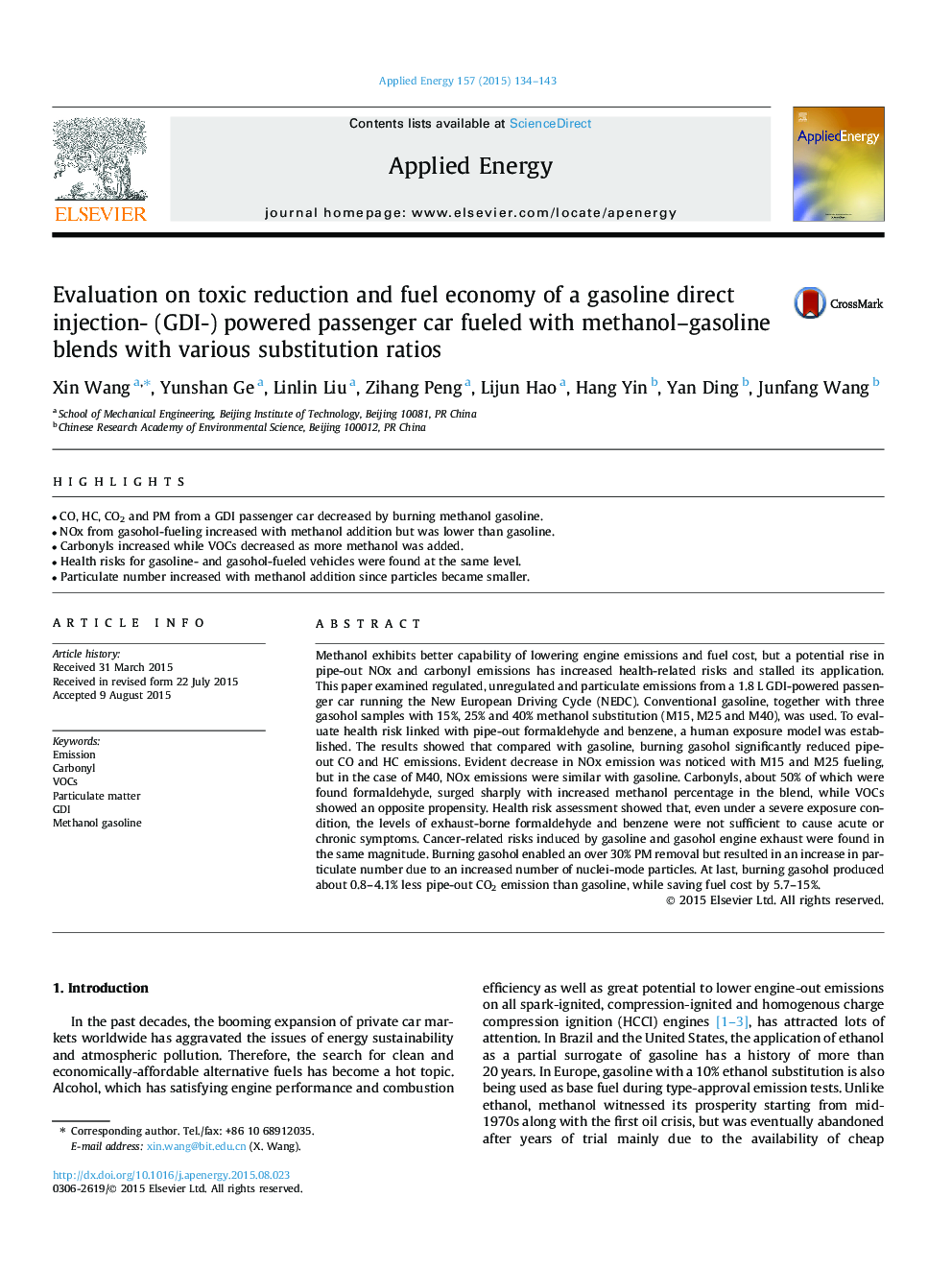| Article ID | Journal | Published Year | Pages | File Type |
|---|---|---|---|---|
| 6685864 | Applied Energy | 2015 | 10 Pages |
Abstract
Methanol exhibits better capability of lowering engine emissions and fuel cost, but a potential rise in pipe-out NOx and carbonyl emissions has increased health-related risks and stalled its application. This paper examined regulated, unregulated and particulate emissions from a 1.8Â L GDI-powered passenger car running the New European Driving Cycle (NEDC). Conventional gasoline, together with three gasohol samples with 15%, 25% and 40% methanol substitution (M15, M25 and M40), was used. To evaluate health risk linked with pipe-out formaldehyde and benzene, a human exposure model was established. The results showed that compared with gasoline, burning gasohol significantly reduced pipe-out CO and HC emissions. Evident decrease in NOx emission was noticed with M15 and M25 fueling, but in the case of M40, NOx emissions were similar with gasoline. Carbonyls, about 50% of which were found formaldehyde, surged sharply with increased methanol percentage in the blend, while VOCs showed an opposite propensity. Health risk assessment showed that, even under a severe exposure condition, the levels of exhaust-borne formaldehyde and benzene were not sufficient to cause acute or chronic symptoms. Cancer-related risks induced by gasoline and gasohol engine exhaust were found in the same magnitude. Burning gasohol enabled an over 30% PM removal but resulted in an increase in particulate number due to an increased number of nuclei-mode particles. At last, burning gasohol produced about 0.8-4.1% less pipe-out CO2 emission than gasoline, while saving fuel cost by 5.7-15%.
Related Topics
Physical Sciences and Engineering
Energy
Energy Engineering and Power Technology
Authors
Xin Wang, Yunshan Ge, Linlin Liu, Zihang Peng, Lijun Hao, Hang Yin, Yan Ding, Junfang Wang,
